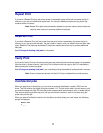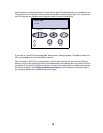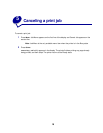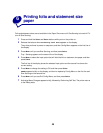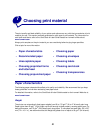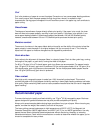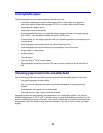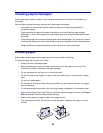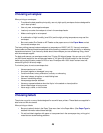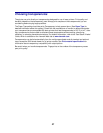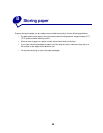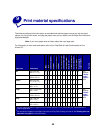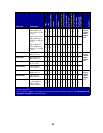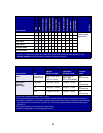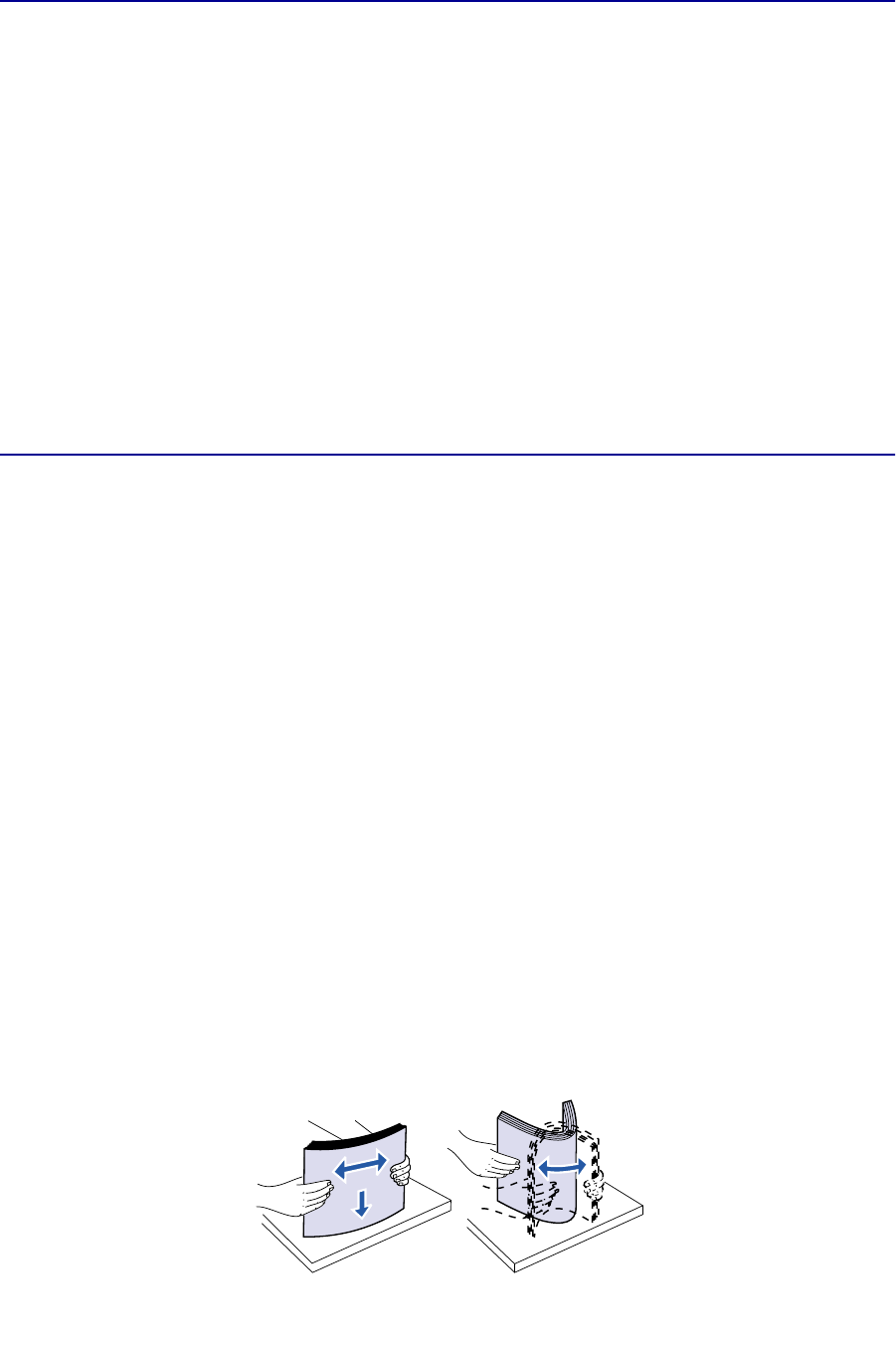
24
Choosing prepunched paper
Prepunched paper brands can differ in the number and placement of holes and in manufacturing
techniques.
Use the following guidelines when selecting and using prepunched paper:
• Test paper from several manufacturers before ordering and using large quantities of
pre-punched paper.
• Paper should be punched at the paper manufacturer and not drilled into paper already
packaged in a ream. Drilled paper can cause paper jams when multiple sheets feed through
the printer.
• Prepunched paper can include more paper dust than standard paper. Your printer may require
more frequent cleaning and your feed reliability may not be as good as that of standard paper.
• Weight guidelines for prepunched paper are the same as for nonpunched paper.
Choosing paper
Proper paper loading helps prevent paper jams and ensure trouble-free printing.
To help avoid paper jams or poor print quality:
• Always use new, undamaged paper.
• Before loading paper, know the recommended print side of the paper you’re using. This
information is usually indicated on the paper package.
• Do not use paper that you have cut or trimmed yourself.
• Do not mix paper sizes, weights, or types in the same paper source; mixing results in paper
jams.
• Do not use coated papers.
• Do not forget to change the Paper Size setting when you use a source that does not support
auto size sensing.
• Do not remove paper trays while a job is printing or Busy is displayed on the operator panel.
• Make sure the Paper Type, Paper Texture, and Paper Weight settings are correct. (See Paper
Menu for detailed information about these settings.)
• Make sure the paper is properly loaded in the paper source.
• Flex paper back and forth. Do not fold or crease the paper. Straighten the edges on a level
surface.




